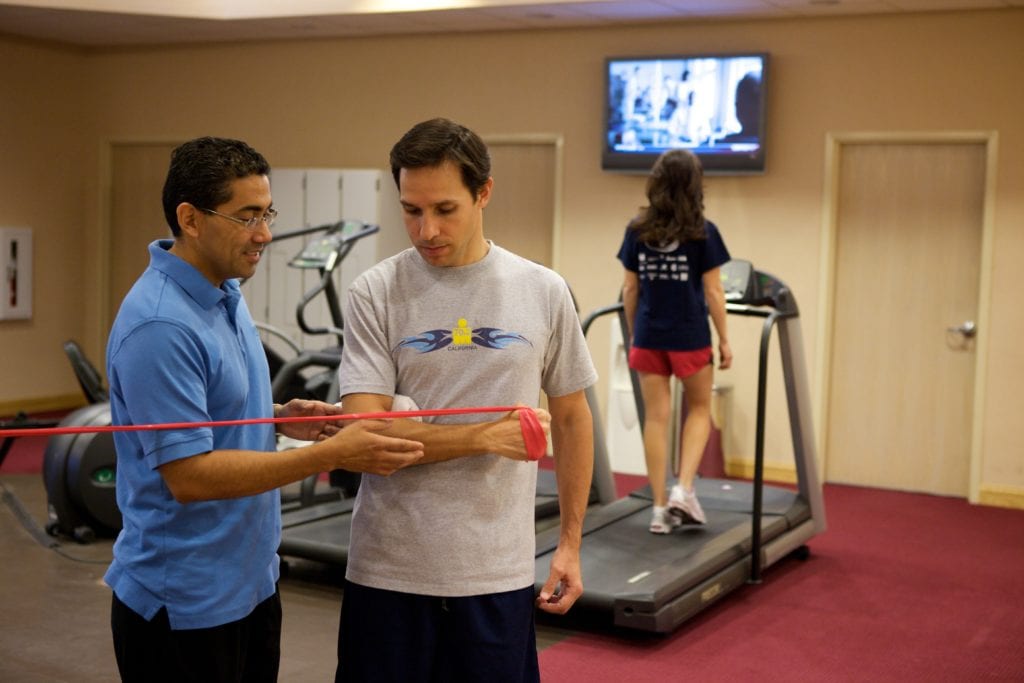Shoulder Surgery

Arthroscopic Shoulder Surgery: Reasons, Risks, and Outcomes
Reasons for shoulder arthroscopy
If you are having pain in your shoulder joint that non-surgical treatments cannot help with, you may have a more serious injury that requires shoulder arthroscopy. Overuse, age, or injury from sports or other activities often cause chronic shoulder pain.
Typically, problems occur in the shoulder when there is damage to the labrum, rotator cuff tendons, articular cartilage, or other soft tissues surrounding the joint. Some shoulder injuries that could require arthroscopic shoulder surgery include:
- Removal of bone spur
- Repair of rotator cuff
- Repair of ligaments
- Removal or repair of labrum
- Removal of inflamed tissue or loose cartilage
- Repair for recurrent shoulder dislocation
What happens during a shoulder arthroscopy?
Prior to shoulder surgery, be sure to share with Dr. Snyder your full medical history, as well as any medications or over-the-counter supplements you are taking. Some medicines may not be permitted to take for the days or weeks before surgery. You will also need to avoid eating or drinking anything for six to 12 hours prior to surgery.
On surgery day, our anesthesia specialist will provide you an anesthetic to numb the area of the injury and put you to sleep. The surgical team will apply an antiseptic solution on the shoulder to clean the area before making small incisions and injecting fluid to inflate the joint and injury area. Then, Dr. Snyder will insert arthroscope to fully determine the extent of the injury and fix it with small tools. After the injury is treated, the incision points will be closed with stitches.
Possible risks from shoulder arthroscopy
Like any surgery, there are risks with being put under an anesthetic and having incisions made. A few potential complications include excessive bleeding, blood clots, infection, and damage to blood vessels or nerves. However, these are very rare, and most risks are usually minor and treatable before, during, or after surgery.
Recovery and postoperative expectations
Because of the minimally invasive nature of a shoulder arthroscopy procedure, the operation normally takes less than an hour. After surgery, patients should take pain medicine as needed. There will be slight pain and discomfort for at least a week post-operation, but recovery is comparatively quick to other, more invasive surgeries.
Our rehabilitation specialist team will provide a personalized physical therapy care plan to strengthen the muscles around the healing joint and recover full range of motion. You should be completely back to your regular activities within a few months of surgery.
AOI Advantages
We take care of you on-site, state certified Surgery Center. You don’t have to go to a hospital.
You will receive same-day service — walk in, walk out – no crutches, no overnight stays.
There is a comfortable waiting area for family & friends, complete with refreshments, snacks and DVD/ Satellite Entertainment Theatre.
We use minimally invasive surgical procedures that dramatically reduce your recovery time.
The same friendly, reliable staff is with you from consultation through rehabilitation.
There will be minimal scarring, with tiny entry points similar to the diameter of a pea.
You will benefit from thorough follow-up and physical rehabilitation services.

